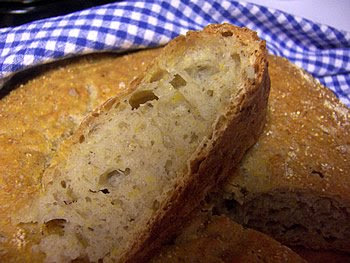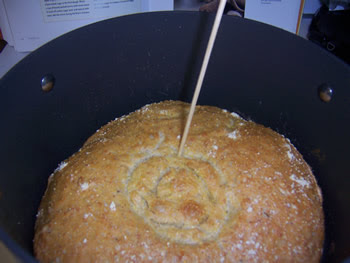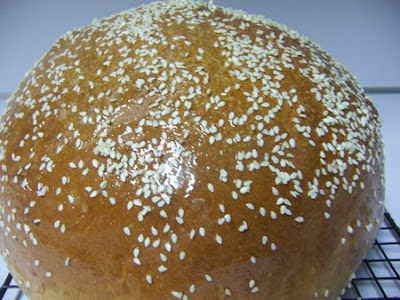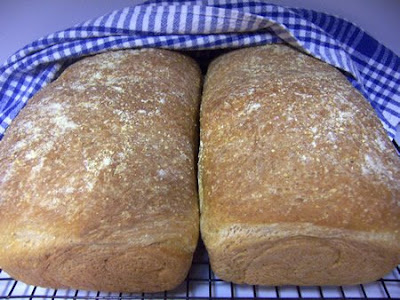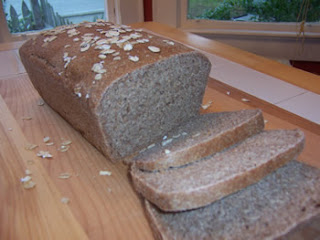This bagel recipe uses the sponge technique to give the bagels a better flavor and texture. It also helps the bagels to freeze and thaw better. This method takes 2 days due to the extended fermentation time and the time needed to retard the bagels in the refrigerator before baking, but it's definitely worth the extra effort to fit it in your schedule.
I've made bagels before using a different recipe and technique and I wasn't too impressed. However, I really like the method outlined in the Bread Baker's Apprentice. It's easy and the bagels taste great!
For a different type of bagel that uses a variation of this formula, check out Sourdough Bagels on My Mind.
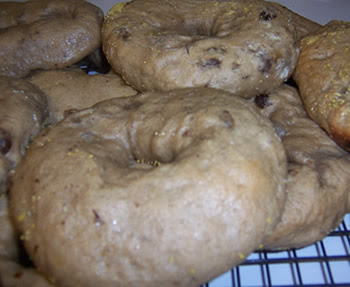
- "According to folklore, bagels were invented in seventeenth-century Austria as a tribute to the wartime victories of King Jan of Poland, and were modeled after the stirrup of his saddle. They were a bread for the masses, popular also in Germany and Poland, but they were introduced into the United States by German and Polish Jewish immigrants, so we think of them as a Jewish bread. Now, because of the softer steamed versions, bagels have once again become a bread for the masses." -- Peter Reinhart The Bread Baker's Apprentice.
Let's get baking!
If you're following along with us, refer to page 115 in the Bread Baker's Apprentice. In this section, Peter Reinhart provides a very good commentary on different techniques for making bagels. I didn't realize how many different schools of thought there are for making bagels. I just know I like them.
The Sponge
The dough
Shaping the bagels




Retarding the bagels in the refrigerator
You can check to see if the bagels are ready to be retarded in the refrigerator by using the "float test". Fill a small bowl with cool or room-temperature water. The bagels are ready to be retarded when they float within 10 seconds of being dropped into the water.
Take one bagel and test it. If it floats, immediately return the test bagel to the pan, pat it dry, cover the pan, and place it in the refrigerator overnight (it can stay in the refrigerator for up to 2 days). If the bagel does not float, return it to the pan and continue to proof the dough at room temperature, checking back every 10 to 20 minutes or so until a tester floats. The time needed to accomplish the float will vary, depending on the ambient temperature and the stiffness of the dough.
My test bagel floated within 10 seconds. It was pretty cool!
Bagels after being retarded in refrigerator overnight.
Ready to bake the bagels
 |  |
 |  |
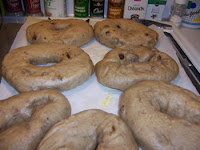
Thanks for joining us this week in the Bread Baker's Apprentice Challenge.
Stay tuned for Day 4 of the Bread Baking Challenge:
Next time, we'll be making Brioche. Depending on which version you want to make, you'll need plenty of eggs and butter. I've made the middle-class brioche before and it was so rich, I'm going to try the Poor Man's Brioche this time
Happy Baking!
Cathy




